iii residency // Interview Cathy van Eck
Cathy van Eck is a composer, sound artist, and researcher in the arts. She focuses on composing relationships between everyday objects, human performers, and sound. Her artistic work includes performances with live-electronics and installations with sound objects which she often designs herself. She is interested in setting her gestures into unusual and surprising relationships with sounds, mainly by electronic means.
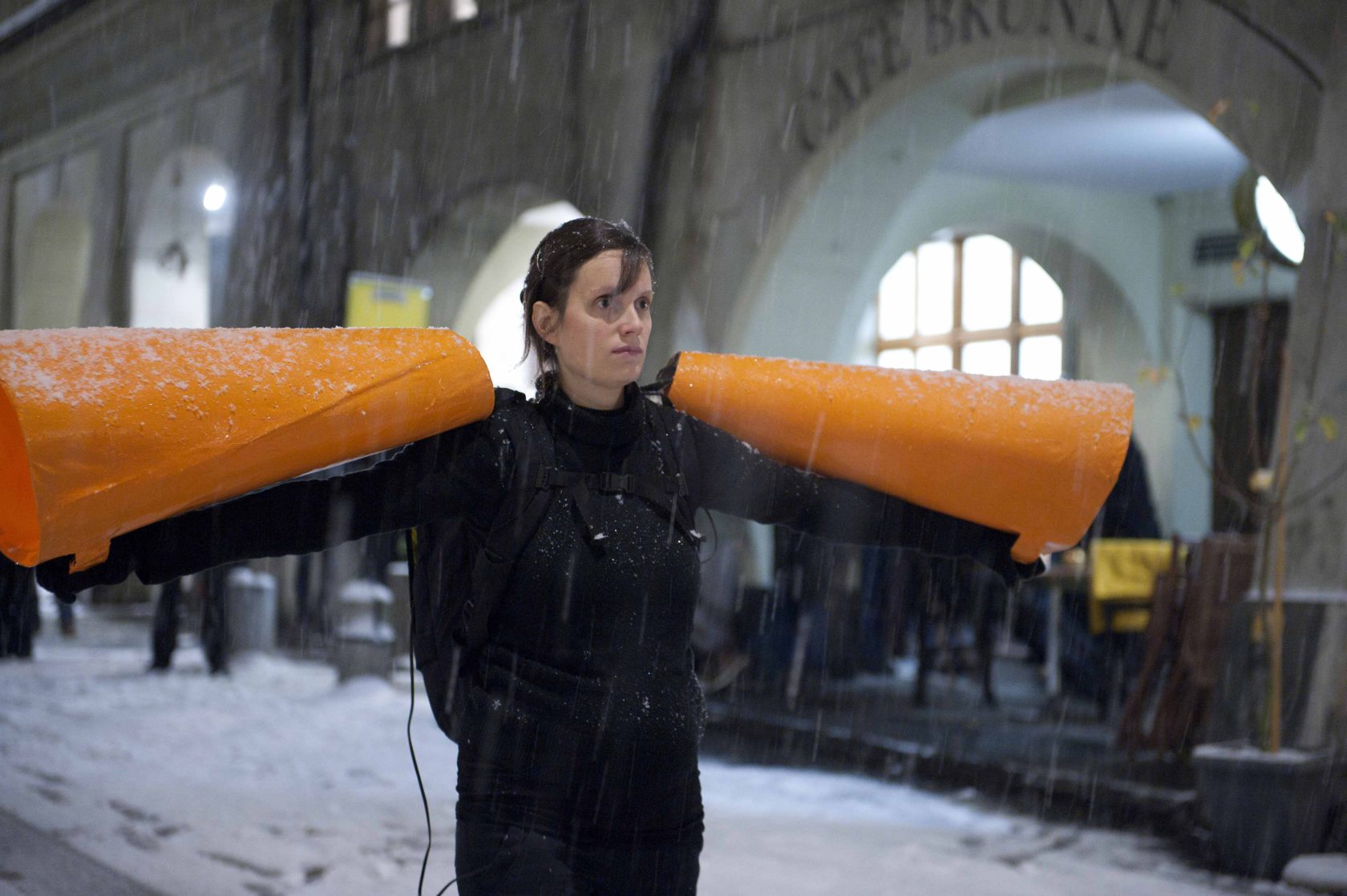
Can you tell us something about your work? What is your background?
I come from really classical music. I studied composition in The Hague and then in Berlin. During these studies I discovered not only much experimental music but also electronic music. What especially fascinated me was the interactive aspect: you put a sound in, and then you get something else out. So I started to write works for instruments and live electronics. I also became interested in the theatrical aspects of making sounds, and started to work with other objects on stage, such as a plant, tin cans or aluminium foil.
What are the theatrical aspects of making sounds?
What is theatrical for me is in producing sounds: looking for ways to create sounds, with gestures and objects that have different associations, outside of music. I have for example a piece during which the performer is watering plants with a watering can, but at the same time sound is produced due to these gestures. There is an immediate connection between the gesture of watering and the created sound, as what is the case with a musical instrument. At the same time the act itself is not related to the music at all.
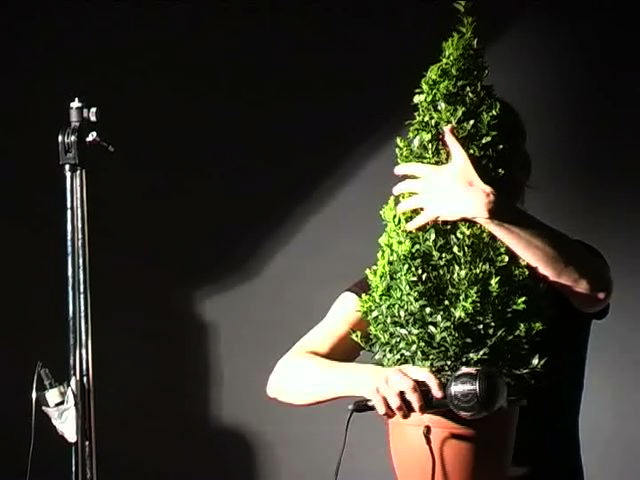
Was it difficult to approach sound in a 'theatrical" manner as a former Composition student?
I have always had a fascination for a kind of abstract music theatre. When I studied composition I saw a performance by an Image and Sound student, and I thought: this is exactly what I am interested in doing.,. combining sounds with images in all kinds of ways. But it took me some time to realise how to do that and it was also quite a step to start performing myself.
You stated in an article that you're interested in setting "gestures in to unusual and surprising relationships with sounds", what do you mean by that?
In Song No 3 I have a loudspeaker in front of my mouth with a white paper attached to it, All sounds are controlled by my arm gestures: the distance between the microphone in my hand and the loudspeaker in front of my mouth is deciding what will sound. In the beginning, the figure I represent on stage seems to start to “speak” (well some electronic noisy sounds) when the microphone is close to my loudspeaker-mouth, and stops speaking again as soon as I take the mike away. At the end, the opposite is the case: I can make large movements with the microphone, causing a kind of singing-like sounds. Only when the microphone is brought close to my loudspeaker-mouth it will be silent. During the piece similar gestures thus create completely different sounds, something which could never happen with “real” musical instruments. I am interested in creating these kinds of creatures, which are related to our everyday world, but at the same time react in completely different ways (this creature is also not speaking and singing as we do, just in such a way that there is some similarity in the ways the sounds evolve). I want to discover other possibilities of being or living and through that go to a kind of archetype of what we are or could be.
You say "I want to discover other possibilities of being or living and through that go to a kind of archetype of what we are or could be", do you think that sound and movement are the best 'media' to achieve this?
This is a very interesting question. And probably in a way I think yes, sound and movement (or sound and performance, or performative sound art) are the best media, since with them you are always in process. As soon as something is silent or not moving, you have time to take a distance and to look at it or to observe it more intensely.
Something comes alive when sound is added. It is taken out of life if it is just the image. The image can be perceived, you can perceive live, but the experience itself, the process is probably more in sound for me.
Does your work need the presence of a performer?
In my work there is nearly always a performer. Or there is an interactive aspect in the installation, so then the audience becomes the performer. I need the movement, these can be objects or people, to have the “now” moment in my work. There is always a kind of performance aspect, someone or something is doing this now.
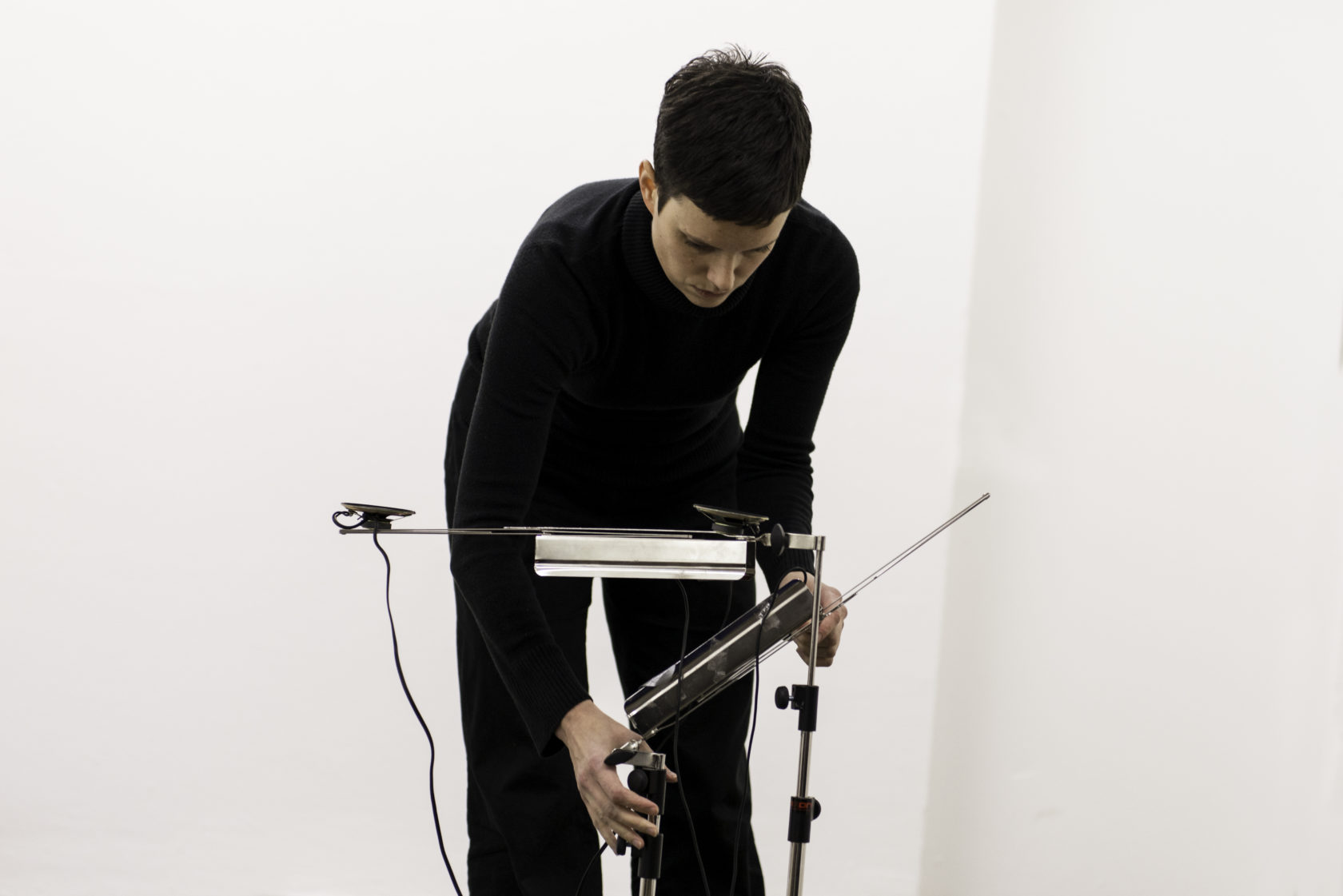
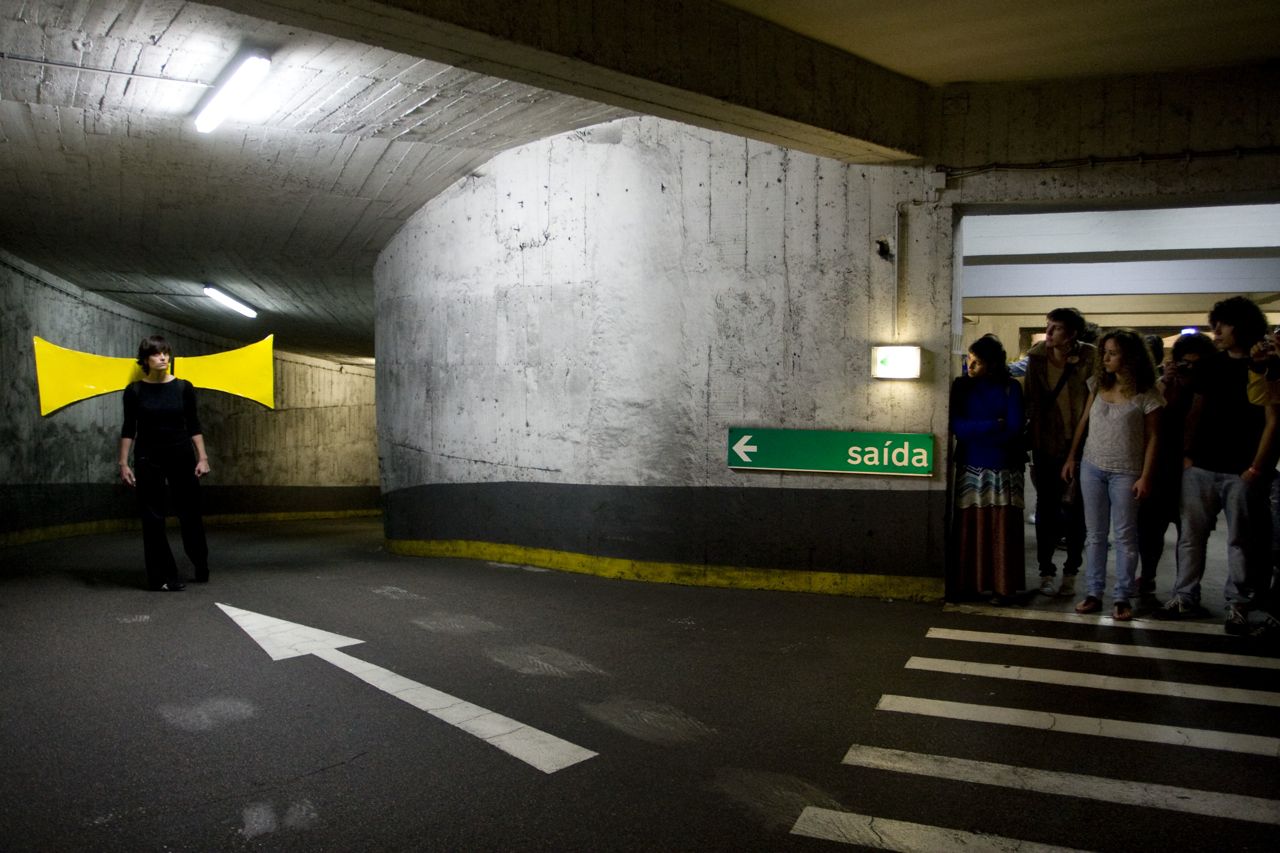
Can you describe a theme or motive in your work?
I think my work is often using quite a minimalistic set-up and then starts to explore the different meanings and associations of this set-up, both in sound as with the objects. In the piece “music stands” I just use two metal music stands and small loudspeakers and contact microphones. Then it slowly develops from just setting up the musical stands and amplifying that sound, to two music stands which are folded in strange ways and their sound is connected in a feedback loop. I am interested in these alterations during a piece. I look for transforming the way the sound is produced and try to reorientate the relationships between all elements on stage.
Can you depict the relationship between your performative work on one hand and your writing/research on the other hand? (is there a dynamic/tension?)
I would like to add a third activity, which is teaching. These three are in constant exchange in my life but at the same time are also realms of their own. I nearly never write or teach about my own work, but my research and teaching are exchanging ideas with what I do as an artist. Working on my music/art projects is the most personal and intimate activity, and my research is for example much more distanced. But I try to develop analysis systems in my research which are helpful for my own art. It is a kind of method to become more critical about what I do, but also to think about how to further develop my own work.
In teaching these both knowledges are combined: the distant analysis and the personal intimate work. Also being so close to other people developing their own works makes it very clear to me, how many different ways there are to create something. Also in teaching the aspects and kinds of music I talk about is much broader (I teach on all kinds of electronic music), I am kind of forced to discover new music, which I love.
Which artists have influenced your life or way of thinking? And how?
I find this a very difficult question, because for me often it is not an artist, but more a single work or sometimes just a remark or thought. Also it changes all the time of course, what I am listening to, what I am interested in develops over time. Perhaps most of the time the most influential are just the people I work with, with whom I exchange thoughts and ideas regulary. But also this changes of course from project to project. That is also what I like, when I work with people, that I really get in touch with their thoughts and how they think about music, staging, gestures etc.
I have done intensive projects in the last years with fellow musician / sound artists, such as Lara Stanic, Paul Craenen, Juan Sebastian Lach Lau and Jan Schacher (jasch), but I also work regularly with theatre directors and they give a completely different input of course.
What do you consider as the greatest drive/passion in your work?
I think it is music itself, and especially music concerts. Going to them is for me still the ideal way of perceiving music. I am not really “a listening in the living room person”, and although I regularly listen to music at home, for me the concert is the real music experience. That includes concerts for acousmatic music, so with loudspeakers only.
Sometimes people complain nothing is happening on stage, but for me it is the other way around: everything happens in sound. How often do you have such a situation in your everyday life? But of course also many music performances and installations during which visual stuff is also happening.
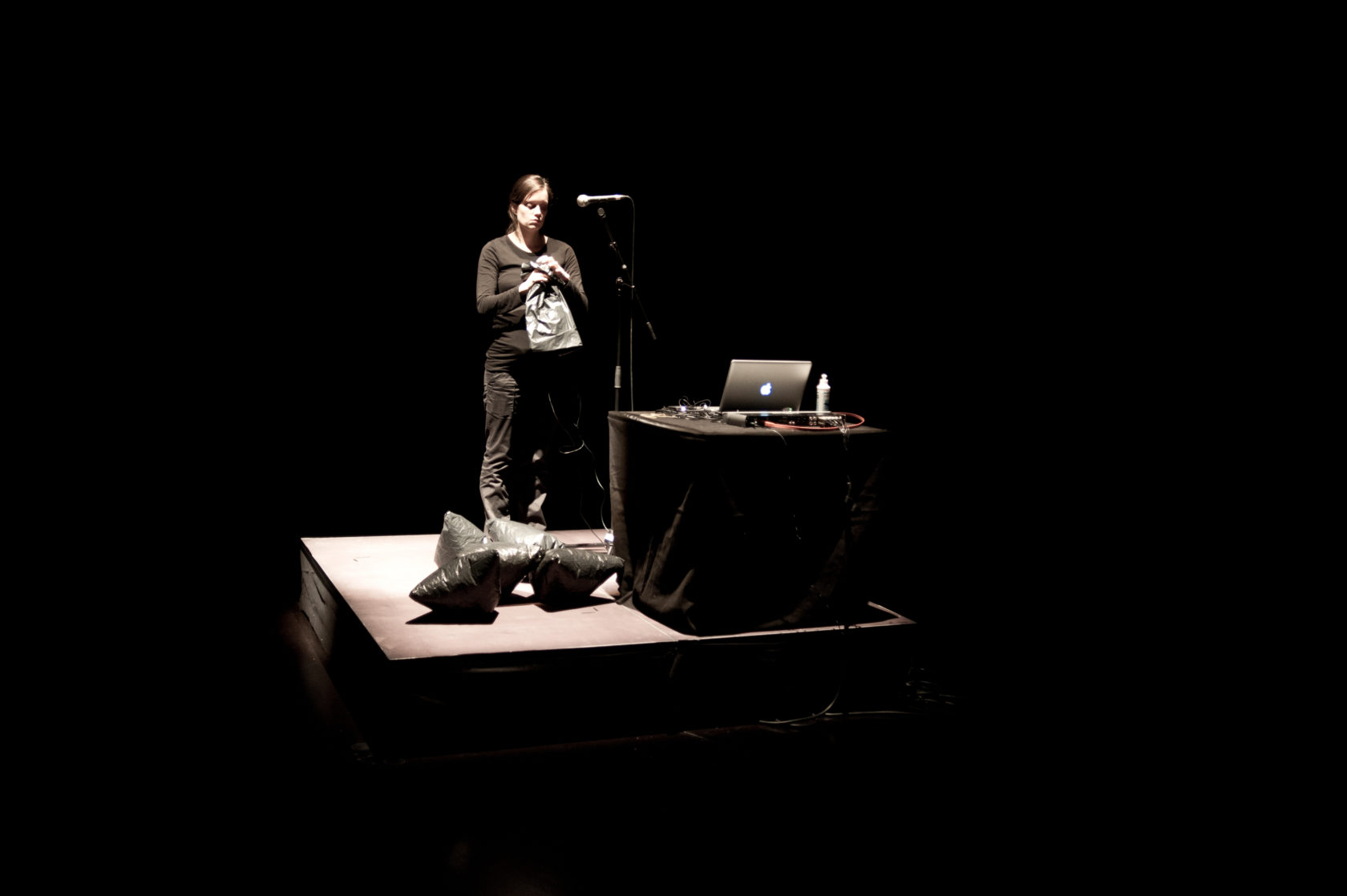
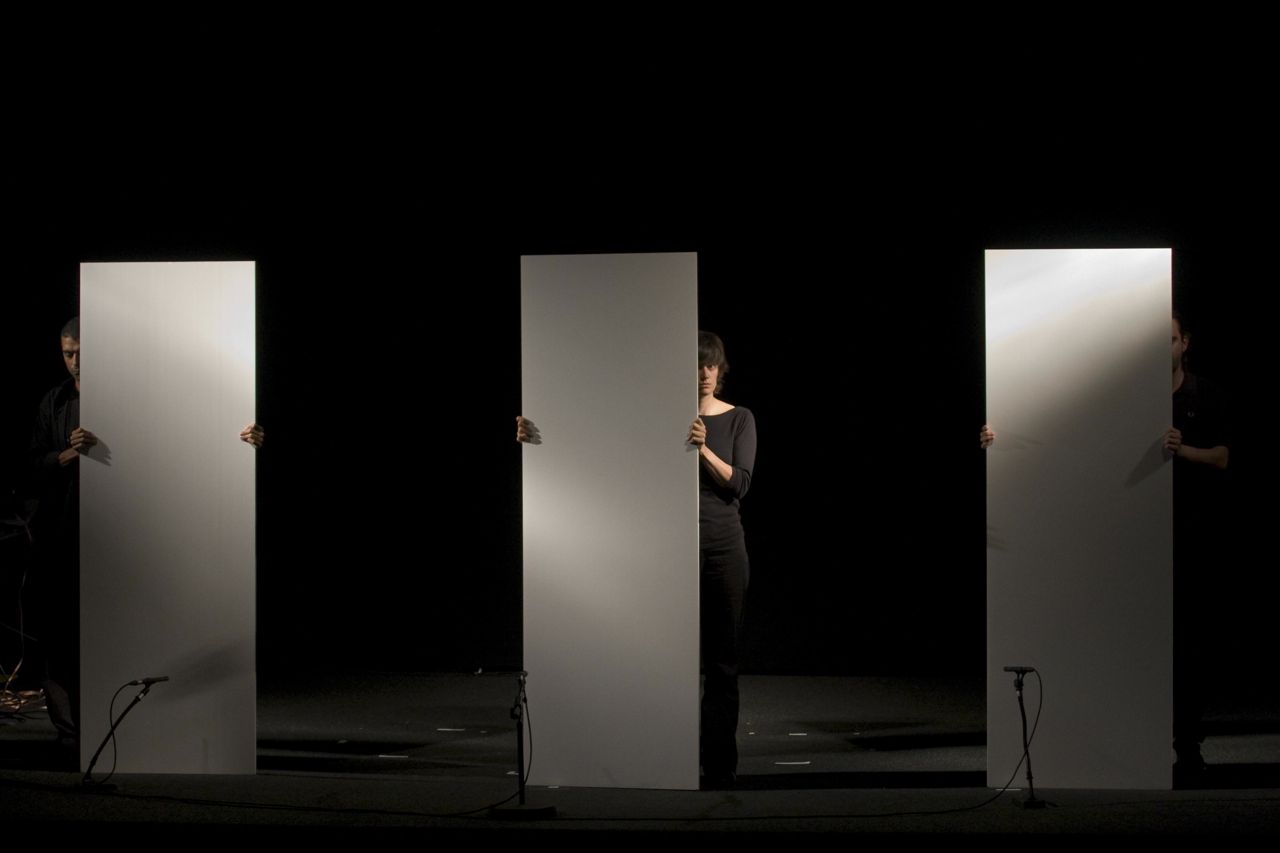
Can you tell us something about your (planned) activities in your iii residency?
I am making a piece with chairs (which I find quite dangerous because there are already so many chair pieces, especially in dance). At the moment it is called “empty chairs”. Besides the three chairs, I will probably use three small loudspeakers on the chair, three contact mikes on the chairs, and one microphone on a stand. It is about words you would like to have said / words you have not said etc. and about “empty chairs” people left after their death.
I am using feedback, in combination with contact mike sounds, all kinds of electronic processing etc. and I will probably do a lot with the positions of the chairs and different ways of placing them and trying to reach the microphone. But often much changes when I start to work more in depth on a piece.
How do you create "a sense of loss (of presence)" in a medium (sound) that doesn’t need a presence on stage?
I will be on stage, but I am of course the one who is present. I don’t know yet how this sense of non presence will be done exactly., but I hope to be able to create this with the interaction of what I do with the chairs and microphone and the resulting sounds.
Cathy van Eck will be performing at No Patent Pending #29 (october 5th).